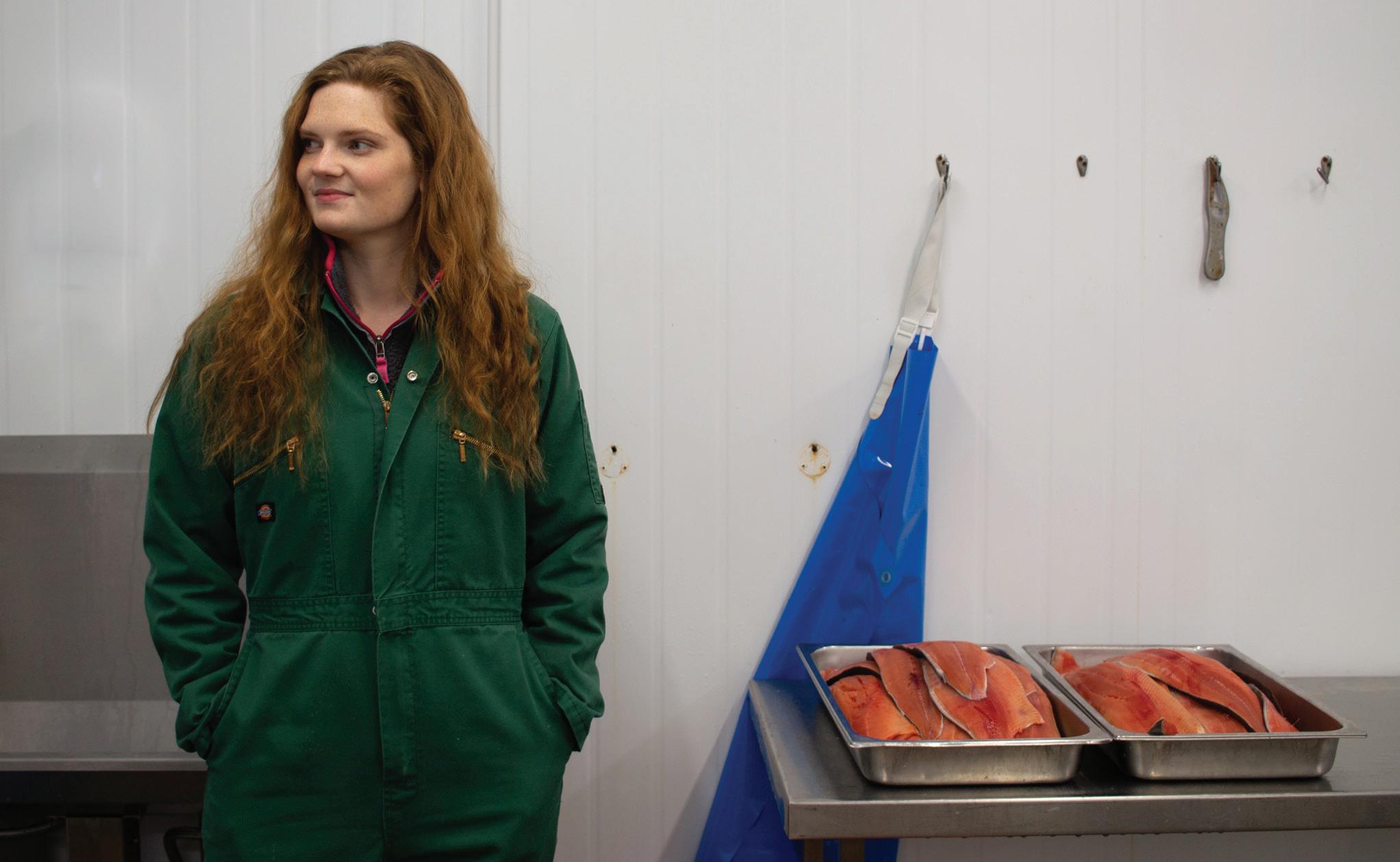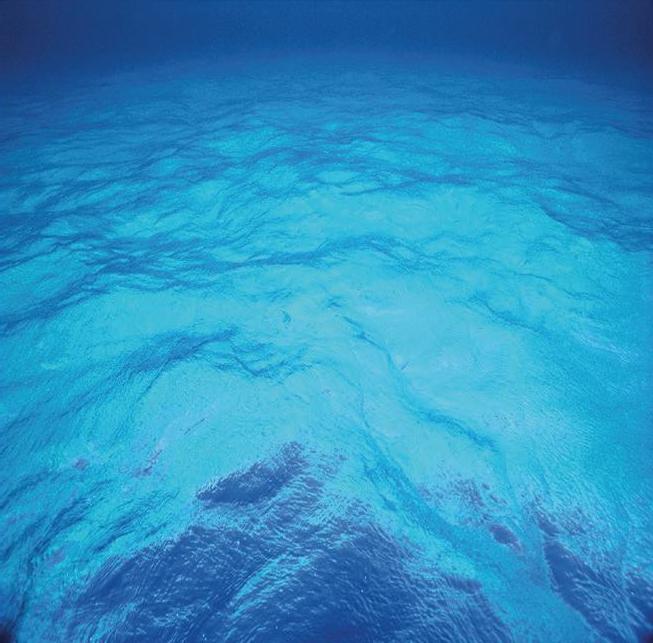
15 minute read
Permit News
Dock Street Brokers
(206) 789-5101 (800) 683-0297 www.dockstreetbrokers.com
For all the latest permit & IFQ listings please call or visit our website.
IFQ NEWS
*Price differences reflect the range from small blocks of D or C class on the lower end to unblocked B class unless ortherwise indicated.*
HALIBUT
At the time of this writing, the 2021 halibut season is in full swing. Demand remains steady for 3A and 2C. 3B continues to be sought after with very little supply available. Ex-vessel prices have strengthend and the expectaion is that they will continue to improve, particularly in comparision to the 2020 season. We expect market activity to remain steady through the spring. The latest is as follows:
AREA ESTIMATED VALUE
2C $40.00/# - $52.00/# - Increased sales activity, unblocked wanted. 3A $37.00/# - $44.00/# - Low supply of unblocked, steady sales. 3B $23.00/# - $30.00/# - Pent-up demand, sellers wanted. 4A $10.00/# - $15.00/# - Some sales activity at reduced asking prices. 4B $10.00/# - $18.00/# - No activity. 4C $10.00/# - $18.00/# - Some activity at reduced asking prices. 4D $10.00/# - $16.00/# - Blocked and unblocked available.
SABLEFISH
At the time of this writing, the season is underway and fish are hitting the docks. Quota sales remain relatively steady, with most of the activity focused in CG and BS and some sales of SE. Dock prices remain low but there are beginning to be signs of improvment with increasing global and domestic demand. It is reasonable to speculate that sales could slow down due to the extension of temporary IFQ transfers. The latest is as follows:
AREA ESTIMATED VALUE
SE $10.00/# - $15.00/# - Some recent sales. WY $10.00/# - $16.00/# - Slow, offers encourages. CG $8.00/# - $12.00/# - Buyers remain active, recent sales. WG $6.00/# - $10.00/# - Activity remains limited. AI $1.50/# - $7.00*/# (A class) - Unblocked available, no recent sales. BS $1.50/# - $8.00*/# (A class) - Recent sales of blocked and unblocked.
ALASKA PERMITS ESTIMATED VALUES
Power Troll $26k Area M Drift $175k Area M Seine $140k Area M Setnet $50k Bristol Bay Drift $190k Bristol Bay Setnet $60k Cook Inlet Drift $22k Kodiak Seine $37k PWS Drift $125k PWS Seine $140k SE Dungeness (75 - 300 pot) Variable - Buyers looking Southeast Drift $60k Southeast Herring Seine $100k Southeast Salmon Seine $150k SE Chatham Black Cod $405k
WEST COAST PERMITS ESTIMATED VALUES
California Crab Variable - Call for info Activity remains limited and permit values will begin to change as new listings come up after the season. Call for more information. The latest is as follows: - 175 pot: $30k - $50k range - 250 pot: $45k - $60k less than 40’. $50k - $100k for 40’ - 60’ + - 300 - 350 pot: $70k - $150k, low availability - 400 - 450 pot: $100k - $280k, value dependent upon length - 500 pot: $250k - $400k+, highest value in 58’ and above CA Deeper Nearshore $35k - Sellers wanted CA Halibut Trawl $45k - $80k California Squid Variable - call for info CA Squid Light/Brail Variable - call for info Oregon Pink Shrimp $60k - $80k Oregon Crab Variable - call for info Steady demand for 500 pot permits over 50’ - 200 pot: $45k - $60k - 300 pot: $100k - $200k - 500 pot: $200k - $300k for <50’ & $6k - $7k per foot for >50’ Puget Sound Crab $160k - Sellers wanted Puget Sound Drift $10k Puget Sound Seine $85k Washington Crab Variable - call for info Permits available, offers encouraged. - 300 pot: $90k - $160k depending on length - 500 pot: $300k - $400k depending on length Washington Pink Shrimp $40k - Leases available Washington Troll $20k - Leases available Longline - Unendorsed $90k - $120k - Leases available at reduced prices. Longline - Sablefish Endorsed Variable - Several recent sales, call for mor info. A-Trawl Variable - Call for info
KEEP YOUR COOL
Rethinking processing, supply, and cold chains in a post-pandemic world
By Paul Molyneaux
was driving to RhoI de Island on a February night in 1984 with a thousand pounds of Maine shrimp sliding around in the back of my Chevy van — some of it having been picked in a friend’s kitchen. I’d blown a fuse and without a spare, I had to choose between the heater and music. I zipped up my Carhartts and plugged in Howlin’ Wolf. No chance the snow I had shoveled onto the totes was going to melt.
That would never happen today. Aside from the Maine shrimp season being on perpetual pause, the markets now demand HACCP processing and traceable supply chains. Ryan Speckman, who started Locals Seafood in Raleigh, N.C., in 2011, has both. He now sells around 4,000 pounds of seafood every week. While he and his partners had plans for expansion, the coronavirus changed everything.
“It kind of forced our hand,” says Speckman. “We had plans for a 13,000-square-foot processing facility. We’re still going ahead with that. But in the meantime, we turned our oyster bar into a production kitchen and started doing value added.”
According to Speckman, prior to the pandemic, 80 percent of his business was restaurants, and 20 percent direct marketing. But in the past year, he has seen direct sales jump 61 percent.
“We were playing at it before, and very inefficient,” he says. “This year, we launched a subscription service and increased our farmer’s market sales.” Speckman has three Mercedes Sprinter vans and a box truck that bring tuna, striped bass, summer flounder, black sea bass, tilefish and other species to Raleigh. “We make crab cakes, tuna burgers, our chef Eric Montagne developed a bloodline burger.”
Speckman is freezing and vacuum packing portions, and is getting an Electrolux freezer to increase production efficiency.
“If we want to go retail, we need a more robust facility,” he says. Besides the freezer, Speckman is using a matching grant to buy an Electrolux combination oven and smoker, to move ahead with his bigger production kitchen.
He plans to focus on quality, with a fleet of new trucks and a speedy supply chain. It’s all about getting a fish on someone’s plate in less that 24 hours. “That’s what our customers are concerned about,” he says.
Speckman is getting his trucks from Emerald Transportation Solutions in Fayetteville, Ga. Emerald sells a variety of packages built on Ford, GM, Dodge Ram, Nissan and Mercedes vans and trucks. The company offers buyers the opportunity to put together

Ryan Speckman, founding partner of Locals Seafood in Raleigh, N.C., preps a delivery in one the company’s Mercedes Sprinter vans. “Our temperature control systems let refrigeration and truck combinations that suit their specific needs, or choose from an inventory that ranges from a $35,000 Nissan NV200 to an $89,000 Ram 5500.
Among the truck suppliers for the seafood business, Bush Refrigerated Vans in Ohio has carved out a niche nationally and is sending small refrigerated trucks to small-scale fishmongers on every coast.
“The Food Safety Modernization Act of 2019, really opened things up for us,” says Steve Mullin, VP of marketing for Bush Refrigerated Vans. Among other things the act requires that shippers provide written specifications to the carrier regarding required temperature controls for the food being transported. “Our temperature control systems let the user prove they maintain a specific temperature during delivery,” says Mullin. “Some companies won’t accept products if they don’t have that.” Bush has focused on the seafood industry, and the company’s website sports a photo of a quintessential Maine fishing harbor. “We go to the seafood shows,” says Mullin. “We’re focused on the small commercial segment.” According to Mullin, the Ford Transit Van is very popular, and the Mercedes Sprinter vans, as well as Dodge and Nissan, and all are usually equipped with an appropriate

—Steve Mullin, BUSH REFRIGERATED VANS
sized Thermo-King refrigeration unit.
“Our price points are reasonable, and we off er a lease-to-own option,” he says.
In February 2021, Bush opened a new 15,000-square-foot production facility. “We are looking at the fi nal milehome delivery — that market is blowing up right now,” says Mullin.
Heather Sears, owner of Princess Seafood, a combination restaurant, fi sh market, and wholesaler in Fort Bragg, Calif., is operating at a scale small enough to be exempted from transport requirements.
“We just put the fi sh in the truck with ice,” she says. Sears owns and operates her own vessel, the 44-foot F/V Princess, and sells all she can catch through Princess Seafood. “We sell local crab, blackcod, rockfi sh,” Sears says, noting that her all-women team fi llets
Making Refrigeration Simple.

SELF-CONTAINED RSW SYSTEMS SPLIT RSW SYSTEMS TITANIUM CHILLERS LIVE AQUATIC REFRIGERATION SYSTEMS
IN-HOUSE DESIGN ENGINEERING BLAST FREEZERS

10-Ton Hydraulic RSW
with titanium chiller
20-Ton Electric RSW
with titanium chiller
Titanium Chillers
35 HP Electric RSW
with titanium chiller
50 HP Electric RSW
with titanium chiller
50 HP
Shrouded RSW Units Mount on deck, easily removable
IMS
Integrated Marine Systems
Manufacturers of Refrigeration
800.562.1945 | www.IMSpacific.com | sales@IMSpacific.com | 10821 47th Ave. W., Mukilteo, WA 98275 the local fi sh at an inspected facility that is part of the market. “We have some ladies here who work on the boat and in the market. When customers ask who caught the fi sh, they just raise their hands.”
The Princess fi shes for albacore and salmon. “We pressure bleed all our fi sh,” says Sears. “Everyone is doing that now.”
She has a fl ash freezer onboard and can freeze up to 8 tons of albacore. “Not as much salmon because we have to glaze them and we need room to work.”
Sears freezes her fi sh down to minus 30 or 40 degrees, temperatures that lead to the thawed fi sh being virtually indistinguishable from fresh-out-of-the-water fi sh.
Sears notes that many fi shermen have sold out, and sold quota out of the community.
“We lost access to those fi sh, and we’ve lost infrastructure,” she says. “Then there’s a lot of guys who sell to the live market in San Francisco. They can get fi ve times as much as we can pay, so I gotta fi ght for what’s left.” Sears also buys fi llets from processors and dragger fl eets farther north, as well as frozen scallops from the East Coast. “They’re great,” she says. “My customers love them.”
On the other side of the pond, Caroline Bennett, owner of Sole of Discretion, in London, and Wim Vesterden, owner of Pintafi sh, in Brussels, are buying Alaska salmon and selling it in England and northern Europe, competing with the glut of farmed salmon coming out of Norway.
“Wim initially bought a pallet, and they shipped it by air, just to see how it would work,” says Bennett. “Now we have 8 tons coming on a ship, this one,” she says, sending a vessel fi nder link to the M/V NYK Meteor, a 980-foot Japanese-owned, Panamanian-fl agged containership carrying salmon from small-boat salmon fi sheries in Alaska to boutique fi sh markets in England and Europe.
“Without Alaska salmon, my business would be tanked,” says Bennett. “I

Salmon going into the F/V Princess blast freezer. Fish are placed on a tray in front of a giant fan and freeze in an hour. The crew stacks the sashimi-grade fi sh in one side of the fi sh hold. When the trip is done, the Princess crew heads to town and unloads. The fi sh get packed carefully into 1,000-pound boxes and delivered right to cold storage.
bet I sell 20 salmon to every one local pollock. People here want to eat salmon.”
Pre-Brexit, Vesterden and Bennett were taking delivery in Liverpool and trans-shipping to the continent.
“Wim was doing me a favor, but after Brexit the last shipment was stuck with paperwork. So now the shipment will go to Rotterdam or Antwerp.”
The duo is getting Bristol Bay sockeye from Popsie Fish Co. in Homer, Alaska; chum and pinks from Northline, in Sitka; and kings from Yakobi Fisheries in Pelican.
“We get them headed and gutted,” says Bennett. “I have three to nine people working in Plymouth, and I have to keep them busy even when the weather is bad. I can’t just say, oh well, no fi sh, stay home today. So, when the local boats can’t get out, we process the salmon. We just look at the weather, and if it’s bad, we start thawing. It’s really great that we can rely on this really well-frozen product from Alaska.”
Most of the frozen fi sh coming out of Alaska is not salmon, however, but pollock, processed by large-scale freezer-trawlers with a total allowable catch of 1.42 million metric tons in 2020. But according to Tom Kay, general manager of Kami Tech, a Seattle supplier of fi sh processing equipment, not a lot has changed in at-sea processing in recent years.
“The products and basic processes are basically the same,” says Kay, who started processing fi sh in the 1980s. What has changed is the speed. “I was on the American Empress in 1984



Honey Bowker (who wears a hairnet when handling fi sh) manages the processing of Alaska salmon that have been shipped by container to the fi sh market Sole of Discretion in London.
when we broke a record by processing more than 100 tons in a day. Now, there’s a Glacier Fisheries boat, the Alaska Ocean, that processes as much as 300 tons a day. If you were running a boat nowadays and processed 100 tons in a day you’d be getting a phone call from the o ce asking what’s wrong.” According to Kay, the catcher processors upgraded about 15 years ago. “They realized there was incredible value in the meal and oil, and they invested in creating those products.” Since then, he points out, innovations have been incremental.
From trucks carrying hand-cut sh in ice, as has been done for decades, to automated microprocessing to 1,000foot ships with half-containers of salmon, seafood continues to move around the world. While products like surimi and sh blocks travel along traditional channels, innovators are nding niches for other species, and adapting processing and supply chains to fast-changing markets.
Paul Molyneaux is the Boats & Gear editor for National Fisherman and author of “The Doryman’s Re ection.”




MANUFACTURING QUALITY ALUMINUM & BRONZE HARDWARE TO THE BOAT BUILDING INDUSTRY SINCE 1965

WWW.FRASERBRONZE.COM

5625-48th Dr. NE Unit D Marysville, WA 98270 Toll Free: 877-264-1064 Made in USA
HYDRO-SLAVE
SAME DAY SERVICE
HAULERS AVAILABLE 8” TO 17”
• ALUMINUM BACKPLATE • POLISHED STAINLESS BACKPLATE • ALL STAINLESS HARDWARE
POWER STEERING AVAILABLE IN 5 CLASSES
• UP TO 120 FEET • STAINLESS QUADRANT ASSEMBLIES • STAINLESS HELMS
ONE TON BOOM WINCH
• AvAILABLE IN POWDER COATED STEEL OR STAINLESS STEEL • AvAILABLE WITH A HyDRAULIC BRAKE CALL FOR DETAILS
DUAL RAM QUADRANT ASSEMBLY
• 100% Stainless Steel construction • Rudder side thrust eliminated • no stress on boat timbers
5.5 HP HONDA POWER UNIT • 11GPM @ 2000 PSI 2 Stage Pump • Light, Versatile and Portable • This unit will power 10” and 12” and 14” Haulers • Ideal for outboards and other small boats • Log Splitter OUR NEW GENERATION SUPER BLOCKS • 4” Low LIP and HI LIP • 5” Low LIP and HI LIP • 2000 lb. Capacity • Sealed tapered roller bearings • Aluminum Sheaves • Stainless Sheaves
HIGH EFFICIENCY VANE PUMP ELECTRIC CLUTCHES
Call 1-800-747-7550 • Email: marinhyd@midcoast.com • Fax: 207-594-9721
MARINE HYDRAULIC ENGINEERING
17 Gordon Drive • Rockland, Maine www.midcoast.com/~marinhyd/
B&G Gear Shifts
Continued from page 26
“With prices what they are, we went down to three people on the boat to make the percentages better. Fishing the big pots with three guys is a challenge. Fishing the little pots is easy,” Sawle said.
Stubbs added that pots are far easier to bait than hooks, and that fishermen on the grounds have reported they are saving up to 50 percent on bait efficiency after converting to slinkies. Plus, the biologist in Stubbs sees the advantages of keeping the target species away from predators.
“It’s good for fishermen and also good for fish stocks. We can’t be removing twice as much fish from the ecosystem and feeding half of it to whales. That’s not a good legacy,” Stubbs said, adding that the pots themselves are proving to have very little bycatch.
The traps have success catching lingcod and Pacific cod as well. Stubbs and Sewall are working on pots for other whale-addled fisheries like tuna and halibut.

The larger CodCoil pot has an 8-mm steel frame with a heavier web. It has a 32-inch diameter, is 60 inches long and weighs about 20 pounds. Custom specs available upon request.
Brian Hagenbuch is the Products editor for National Fisherman.
Buyers from Alaska to California
come to Pacific Marine Expo looking for everything they need, from bow to stern, for the most important component of their business, the boat. They want the opportunity to source products and services – just like yours – all in one place.

Email Christine at csalmon@divcom.com for more information and let Pacific Marine Expo help you Stay Connected.
Produced by:








